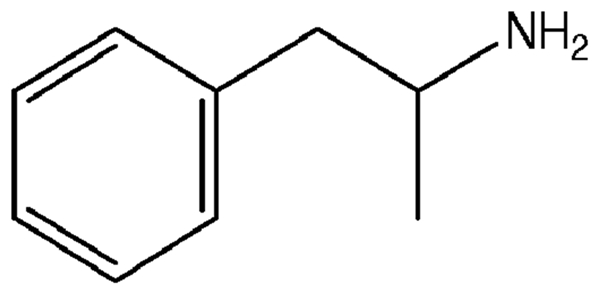
3. Amphetamine

Image 2. Chemical formula of amphetamine.
After the catastrophe of 2,4-DNP, amphetamine started being used for weight reduction in the late 1930s. To this day, drug dealers most commonly use amphetamine under the pretext of “diet drug” to lure working women into dependency.
At the time, only opium and morphine were considered narcotics and heroin’s harmful effects was just starting to be recognized. On the other hand, amphetamine was used as a nasal decongestant, as well as in narcolepsy, drowsiness and energy enhancement. Its strong stimulant effect drastically reduced appetite and it was used as an anti-obesity drug for the purpose of weight loss. However, amphetamine was very addictive and its use as a simple diet aid came to be prohibited.
In this article, we looked at three early anti-obesity drugs. In a simplified view, thyroid hormone drugs stemmed from the ignorant belief that hypothyroidism caused obesity. 2,4-DNP, an extremely poisonous substance that was later used in herbicides or insecticides, was wrongly used to reduce weight, and amphetamine was a narcotic that should not have been used for the purpose of dieting. The history of anti-obesity drugs began with these wrong choices and the society’s impression of obesity medication becomes more negative with the unfortunate disaster of fenfluramine, which we will cover later. Another reason for the social prejudice against obesity is the widespread belief that obesity stems from laziness or ignorance rather than seeing it as an actual disease that requires treatment.
Effective and safe anti-obesity drugs started to appear in the 1950s. We will continue our discussion on the history of anti-obesity drugs in the next article.
[Advertisement] FCR® (Fractional Prickle CoralCalcium Regentron) – Manufacturer: (www.illglobal.com)]
-To be continued-




















